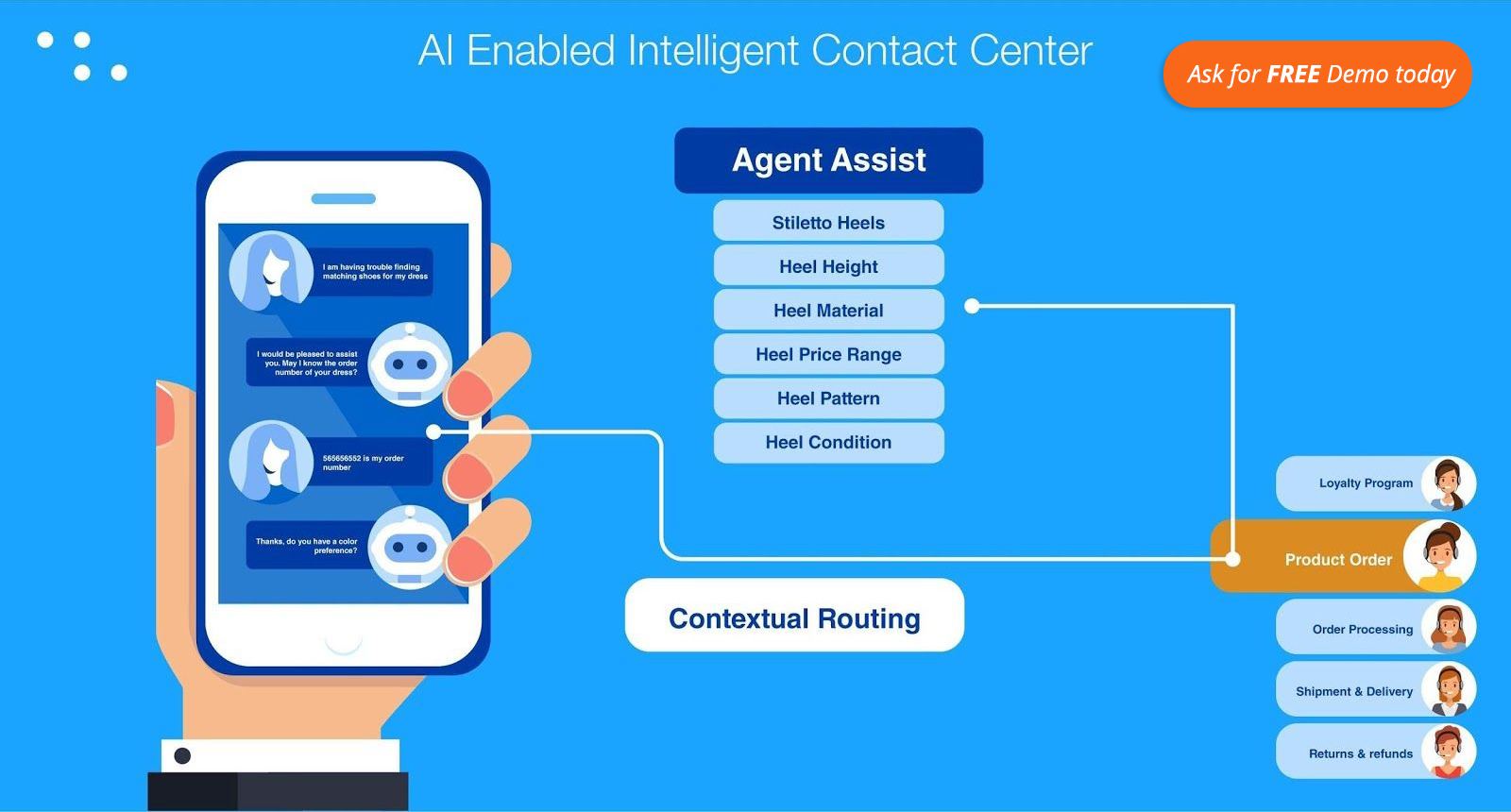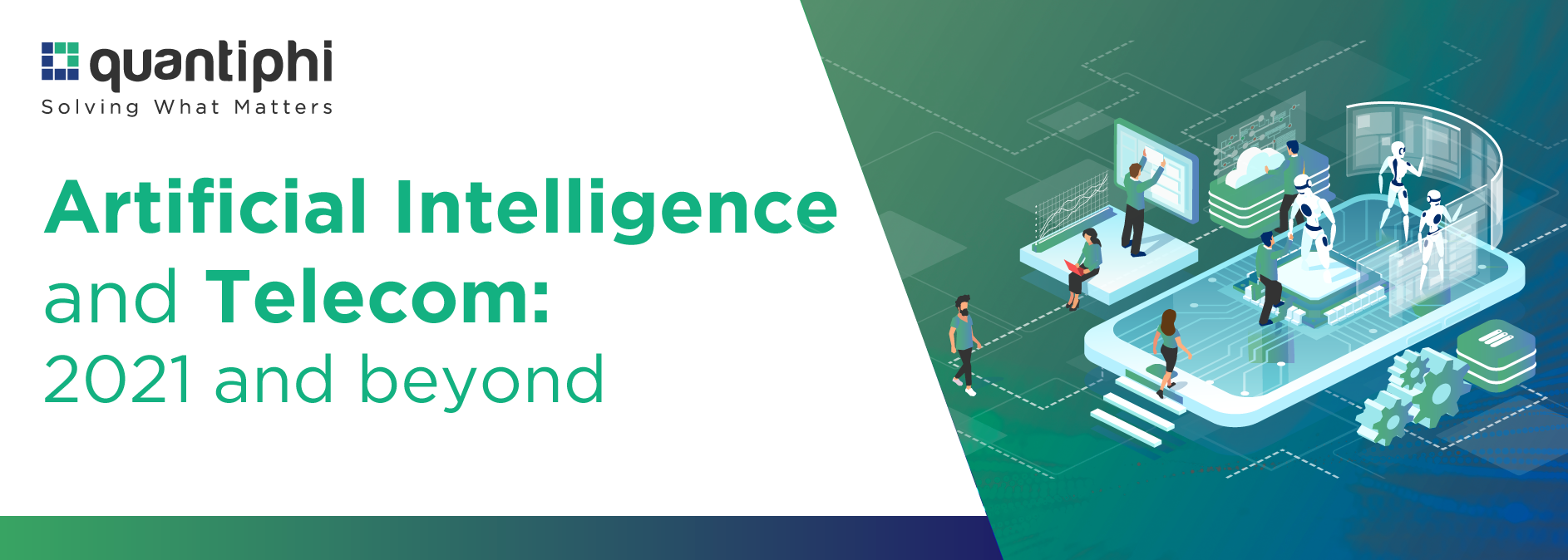Customer service organizations are in the midst of a significant transition, as seen by the evolution of call centers into contact centers and further into customer experience centers. In the years prior to the advent of the contact center, customers primarily interacted with call centers by telephone. This limitation spurred the transition from call center to contact center. Now, consumers can reach out to customer service organizations via multiple channels. Contact centers are no longer cost centers for the organization rather they are evolving into experience hubs and potential revenue generators. They help customers by assisting with relevant information and a personalized experience.
Challenges Faced by Traditional Contact Centers
A call moves through a traditional contact center environment as described below:
- Consider a banking customer calls a contact center to make adjustments to his account.
- When the call arrives in the IVR, the customer is prompted to enter his account number. He enters his account number and proceeds to move through the IVR voice menus. He then selects the option to make an adjustment to his account.
- The customer needs more understanding before committing to the adjustment, so he asks for a Customer Service Representative (CSR). The call gets transferred to CSR.
- A CSR answers the call. The CSR asks the customer for his account number again before service begins. He repeats the account information that he has already entered into the IVR, including his account number and personal identification code (PIN number) because the information did not flow through to the CSR.
From this overview, it is apparent that the traditional contact center does not serve the customer effectively and efficiently. When a customer has to repeat information to a CSR that he has already entered into a system, it wastes both the customer’s and the CSR’s time. The result is an unsatisfactory service experience for the customer and increased costs to the company. The outcome is an unsatisfactory service experience for the customer that can potentially lower the NPS, leading to lower future cash flows.
Moreover, the CSR has to juggle between different applications like CRM, Contact Center Software, Ticketing Tools, etc. to answer a single customer query. Multi-tasking caused by shifting between tasks can cost up to 40% of an employee's productivity, according to the American Psychological Association.
This is just one scenario that pinpoints the challenges with a traditional contact center setup. Many others, such as long waiting queues and low availability of CSRs, etc., negatively impact customer experience and NPS. To overcome these challenges, traditional contact centers must undergo modernization, update infrastructure, and incorporate processes to enable a seamless customer & agent experience.
Key strategies for organizations to follow to transition into experience centers?
When a company makes customers feel appreciated, 76% indicate they’ll keep their business with the brand, 80% say they will spend more with the brand, and 87% will recommend the brand to friends and family members. (Source: Forrester, 2021). Here are the key strategies for organizations to kick start their contact center modernization journey
- Migrate to cloud contact center platform: A cloud contact center platform is an enabler for faster deployment of omnichannel customer engagement & remote work readiness for agents.
- Decentralization for Agility: Decentralization and democratization of the architecture to tap into agile platforms to create fully integrated agile technology stacks. These capabilities offer a huge advantage to enterprises that for years have been tied to a siloed platform to fulfill everything from call handling, recording, analytics, and workforce management.
- Adoption of Total Experience Management: Organizations need to consider a total experience management for the customer, agent, and employee. A delightful customer experience can be provided by establishing seamless backend operations, whether it is CRM, ERP, or other data applications. This end-to-end flow of information is a key ingredient of a modern experience center.
- A Unified Platform for higher visibility: Virtual agents and live agents should work seamlessly together with the objective of resolving customer queries as quickly as possible. This is achieved by a unified platform where the state and flow are maintained between agents. Virtual agents should ideally drive 70–80% of the customer engagement, and live agents join in only for resolving complex queries. As one team, they offer a seamless experience.
- Enable Self-Service: The push for self-service will enable organizations to get more service capacity with the same set of CSRs. These advancements will be useful for providing customers with relevant information quickly without having to wait in long queues. The enabling self-service by providing online FAQs, and smart virtual agents with enhanced knowledgebases is a win-win solution for customers, CSRs & organizations.
How does Google Contact Center AI help a contact center enhance customer experience?

- Omnichannel Experience: Consider a banking customer who has dialed a toll-free number for updating the address of his account with the organization. Once the customer is verified & connected, he is facing a poor network, making it tough to capture the responses. Virtual agents prompt the option of typing in the address over the link sent customer`s registered mobile number. The conversation gets switched from voice to chat channel and the customer continues over the chat channel without re-establishing the context of the conversation.
- Highly Trained Virtual Agents: These agents are trained to handle 80% of the repetitive tasks identified by the organization. Virtual agents assist the customer as per the designed conversation flow. For complex queries, where further assistance is required, the virtual agent hands off to the customer service representative(CSR) with AI-based intelligent routing.
- Advance Assistive AI: The CSR is equipped with a brief history of the conversation that the customer had with the virtual agent. This prevents the customers from repeating themselves. The CSR is further provided with advanced AI assistive technology to give answers to queries more effectively.
- Insights with Continuous Improvement: Once the customer queries are handled, all the performance KPIs related to virtual agents and CSRs, sentiment score, call resolution time, etc. are reflected on the dashboard. The business owner now has a complete view of the customer journey. Here is an example of how a continuous improvement feedback loop is also in place to continuously improve the performance of virtual agents and maintain bot containment.
Deliver Exceptional Experiences With Quantiphi
Quantiphi is a launch partner for the CCAI platform and has built best-in-class AI-powered Google’s Contact Center AI (CCAI) enabled products and solutions using an AI-first digital engineering approach. One of our such offerings is Qollective. CX is built out of learnings from 200+ deployments across different industries. Qollective.CX is a unified platform that helps design, develop, deploy, and manage customer, agent, and user experiences. Managing multiple experiences on a single platform helps businesses to drive different KPIs like zero wait time, high resolution, and low deflection rates more effectively.

Qollective.CX, powered by Google’s CCAI, is a conversational AI package for organizations that are on a quest to modernize their contact center into an experience center. CCAI simplifies every aspect of virtual agent design, development, and deployment, incorporates key features into the contact center, offers cutting-edge AI features for live agents who need assistance, and offers thorough insights into the customer journey.
Our solution suite offers the following primary benefits:
1. Speed: Significant reduction in time spent in the development & go-to-market.
2. Cost-Sensitivity: Accelerators and in-house platforms reduce time & cost.
3. Quality: Using industry-specific pre-built virtual agents helps improve resolution accuracy and overall quality of calls.
Reach out to our experts to incorporate a total experience strategy for your business.
Contributed by: Gaurav Johar and Aarzoo Doshi







